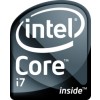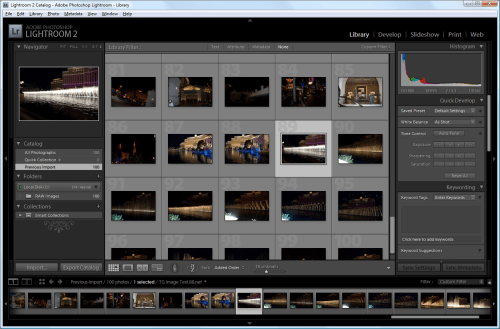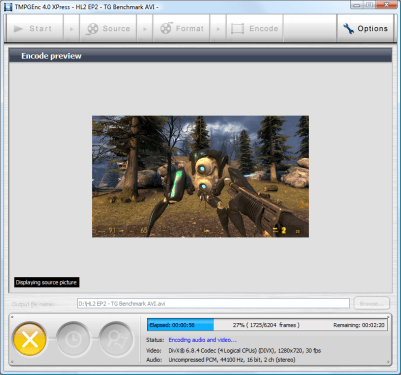- Qualcomm Launches Snapdragon 4 Gen 2 Mobile Platform
- AMD Launches Ryzen PRO 7000 Series Mobile & Desktop Platform
- Intel Launches Sleek Single-Slot Arc Pro A60 Workstation Graphics Card
- NVIDIA Announces Latest Ada Lovelace Additions: GeForce RTX 4060 Ti & RTX 4060
- Maxon Redshift With AMD Radeon GPU Rendering Support Now Available
Intel Core i7 Performance Preview

With Core i7’s launch due in just a few weeks, there’s no better time than right now to take a hard look at its performance, which is what we’re taking care of today. In addition to our usual performance comparisons with last-gen CPUs, we’re also taking an in-depth look at both QPI and HyperThreading performance, and some of our results may surprise you.
Page 7 – Multi-Media: Adobe Lightroom, TMPGEnc Xpress
Photo manipulation benchmarks are more relevant than ever, given the proliferation of high-end digital photography hardware. For this benchmark, we test the system’s handling of RAW photo data using Adobe Lightroom, an excellent RAW photo editor and organizer that’s easy to use and looks fantastic.
For our testing, we take 100 RAW files (in Nikon’s .NEF file format) which have a 10-megapixel resolution, and export them as JPEG files in 1000×669 resolution, similar to most of the photos we use here on the website. Such a result could also be easily distributed online or saved as a low-resolution backup. This test involves not only scaling of the image itself, but encoding in a different image format. The test is timed indirectly using a stopwatch, and times are accurate to within +/- 0.25 seconds.

Fortunately for us, rendering jobs are not the only type to feel the benefits of Core i7. Comparing both our 2.66GHz and 3.20GHz chips together, an overall gain of close to 18% is seen. Not nearly as impressive as what we saw on the previous page, but a gain nonetheless, and a noticeable one if you do a lot of photographic work.
TMPGEnc Xpress 4.5
When it comes to video transcoding, one of the best offerings on the market is TMPGEnc Xpress. Although a bit pricey, the software offers an incredible amount of flexibility and customization, not to mention superb format support. From the get go, you can output to DivX, DVD, Video-CD, Super Video-CD, HDV, QuickTime, MPEG, and more. It even goes as far as to include support for Blu-ray video!
There are a few reasons why we choose to use TMPGEnc for our tests. The first relates to the reasons laid out above. The sheer ease of use and flexibility is appreciated. Beyond that, the application does us a huge favor by tracking the encoding time, so that we can actually look away while an encode is taking place and not be afraid that we’ll miss the final encoding time. Believe it or not, not all transcoding applications work like this.
For our test, we take a 0.99GB high-quality DivX H.264 AVI video of Half-Life 2: Episode Two gameplay with stereo audio and transcode it to the same resolution of 720p (1280×720), but lower the bitrate in order to attain a modest filesize. Since the QX9770 we are using for testing supports the SSE4 instruction set, we enable it in the DivX control panel, which improves both the encoding time and quality.

We seem to be right back on track with the impressive increases here. Once again, comparing our equally-clocked processors of different architecture-types together, we see a minimum increase gain of 25% where our HD video is concerned, and a much lower increase of ~7% for our mobile video.
What we can see so far is that noticeable performance gains are going to be seen more so on larger projects than smaller ones. We saw it with our 3ds Max test, and now this one. Gains of any kind are nice to see, but it’s the larger ones that are more exciting to talk about.
Support our efforts! With ad revenue at an all-time low for written websites, we're relying more than ever on reader support to help us continue putting so much effort into this type of content. You can support us by becoming a Patron, or by using our Amazon shopping affiliate links listed through our articles. Thanks for your support!







